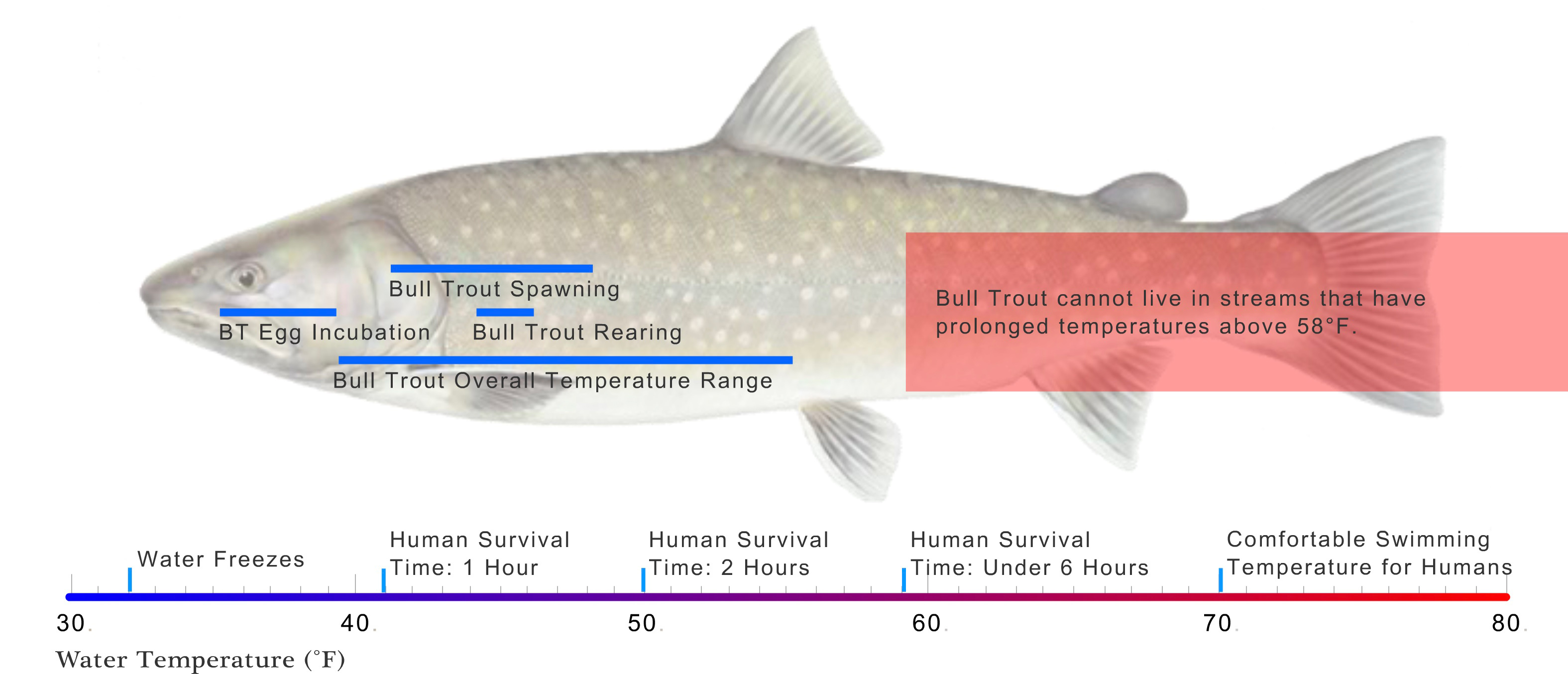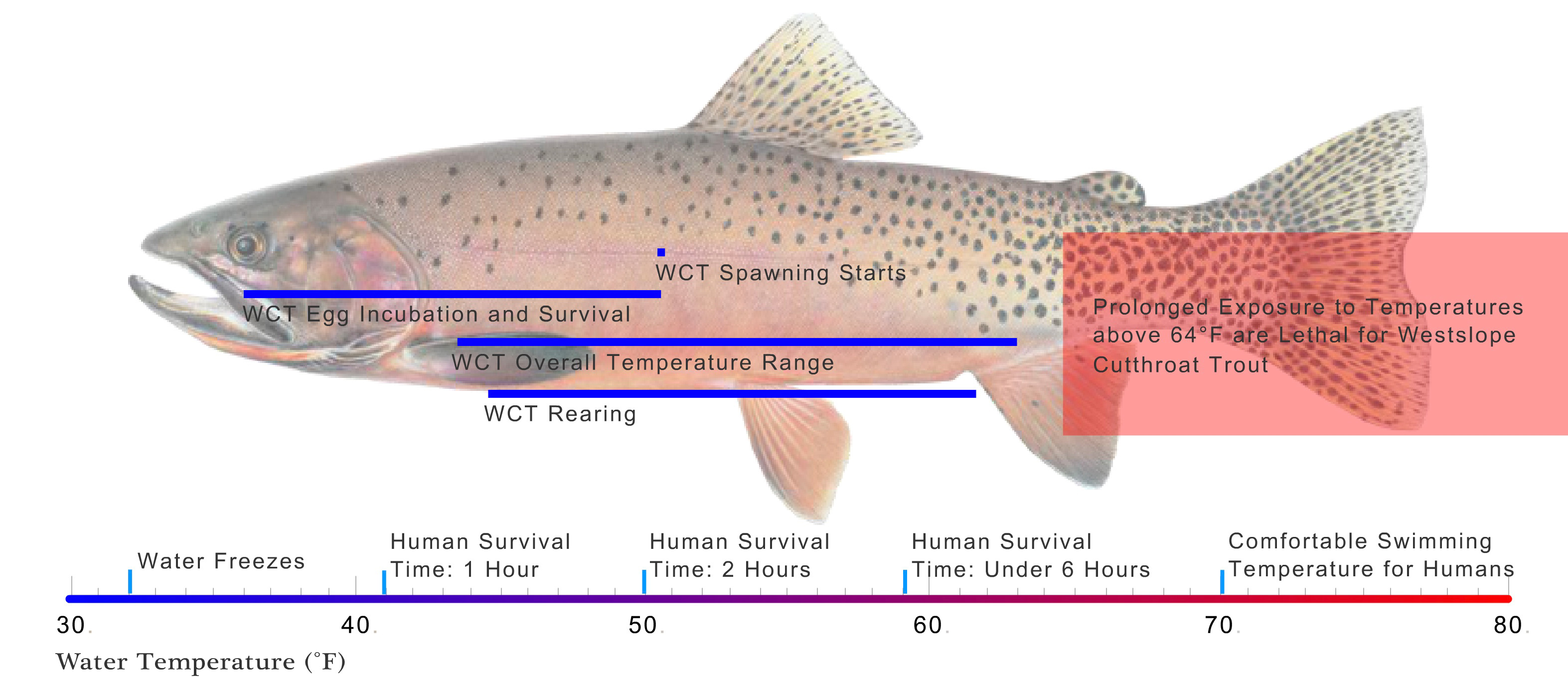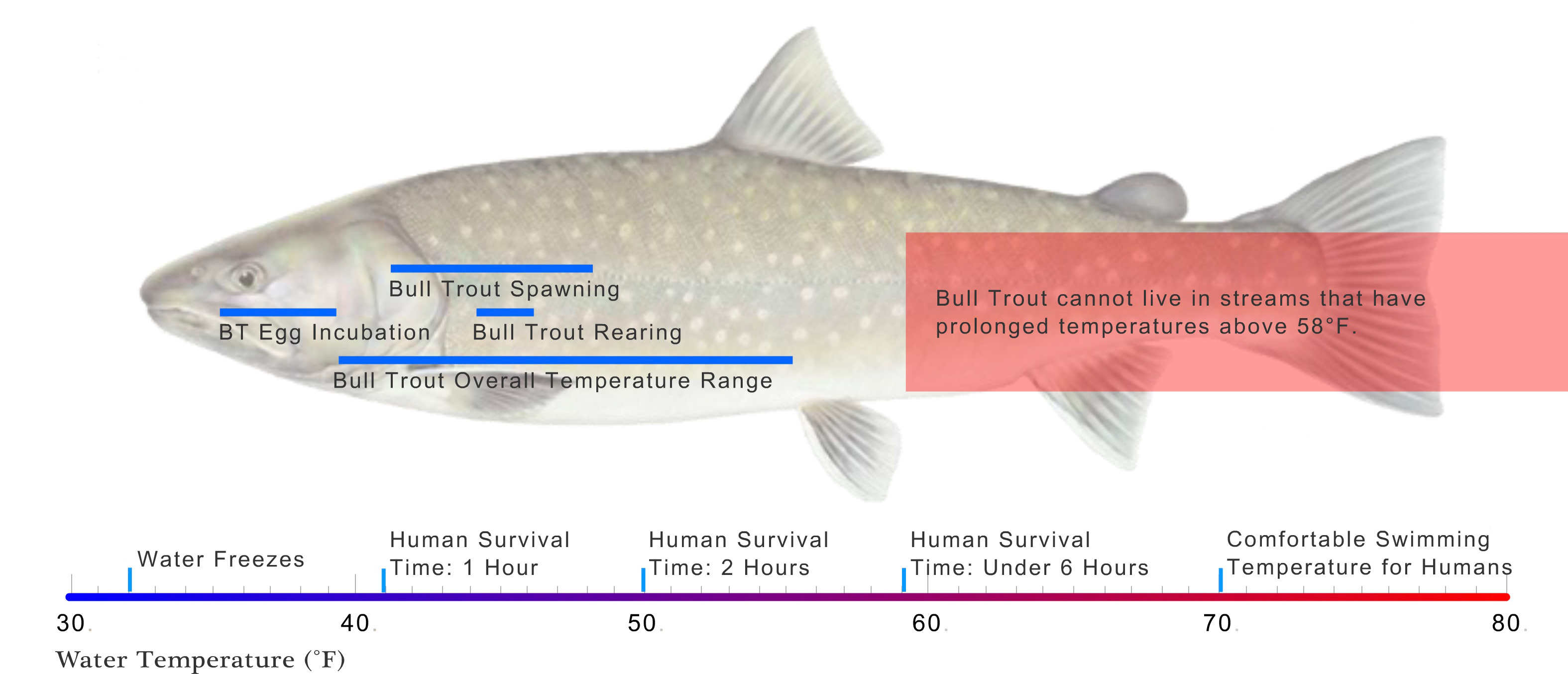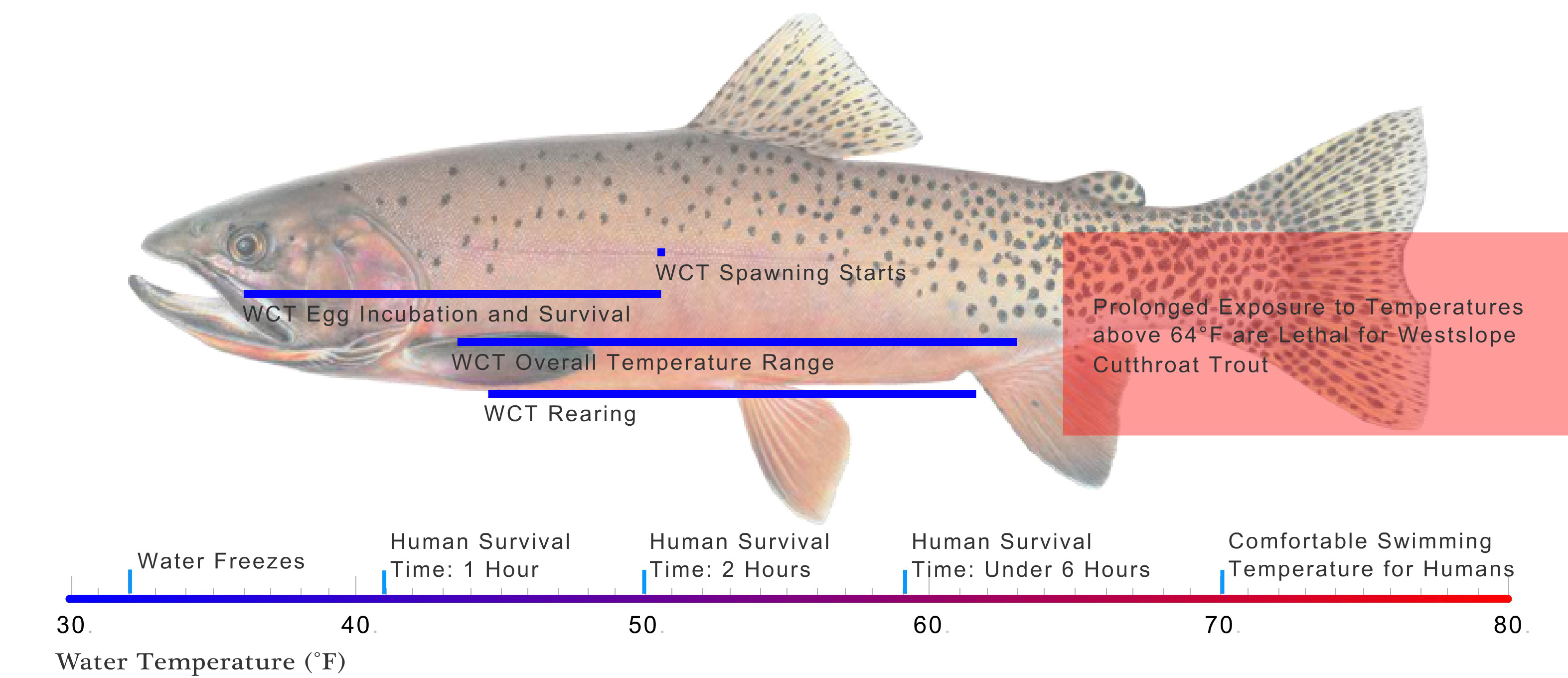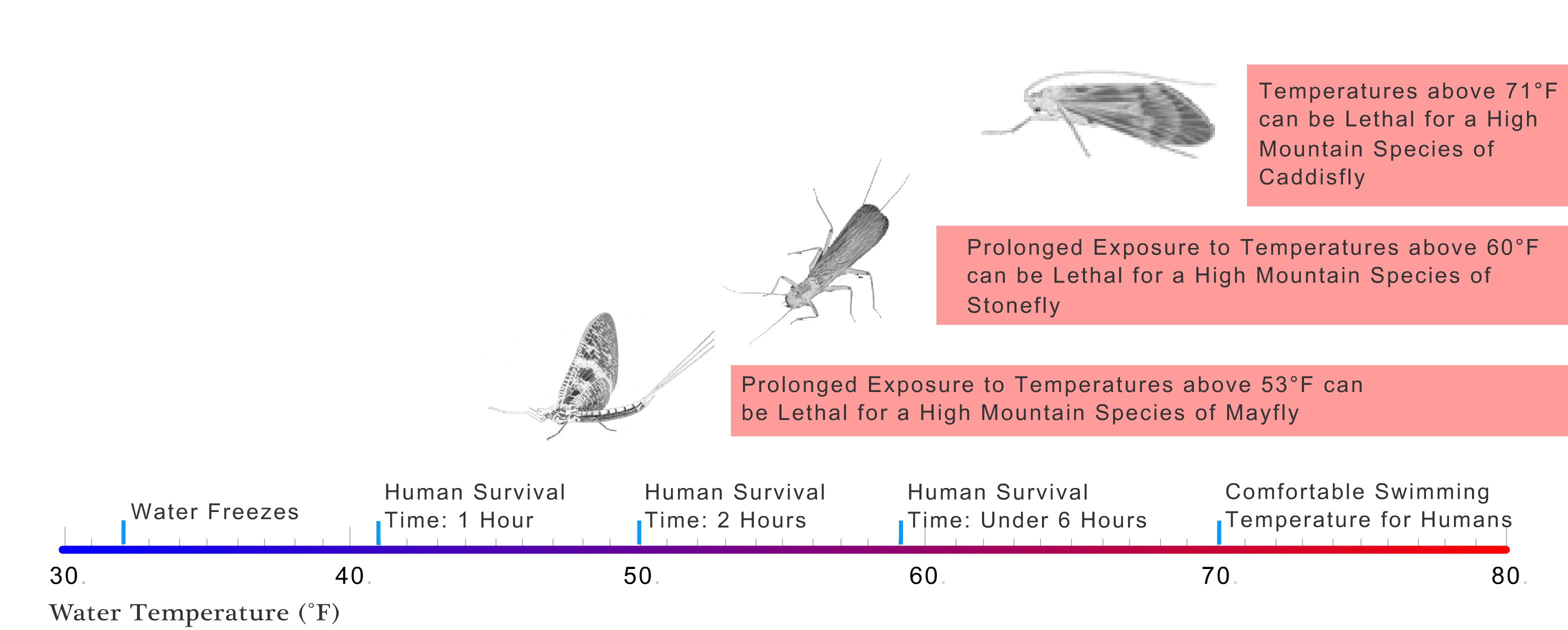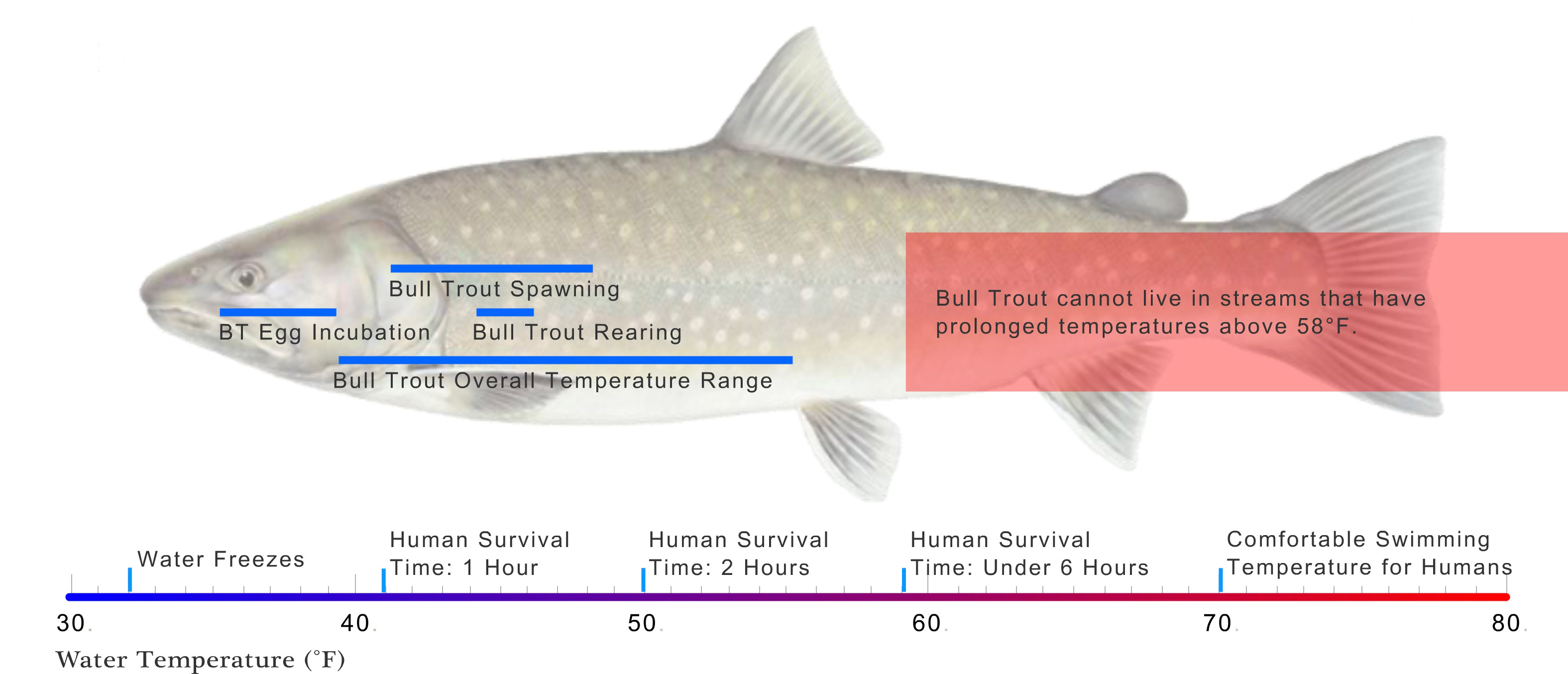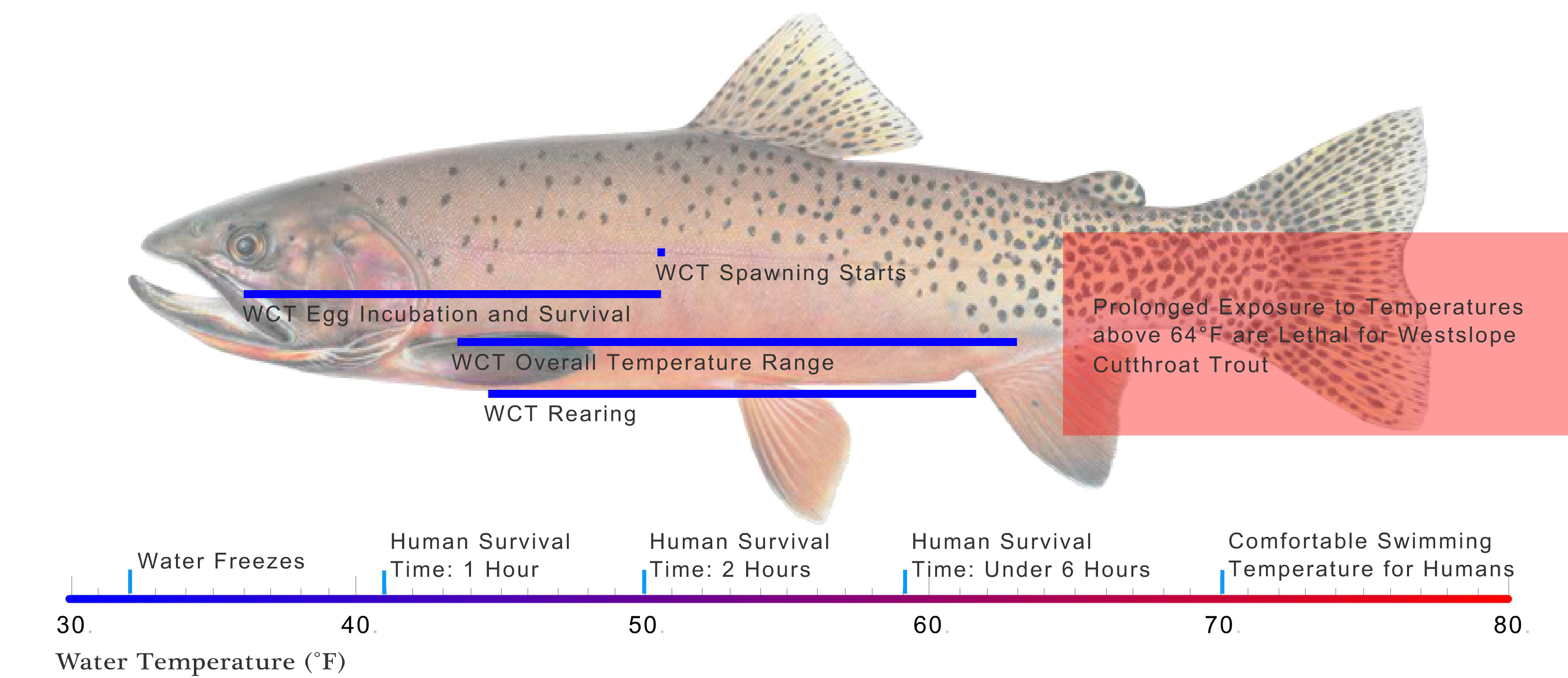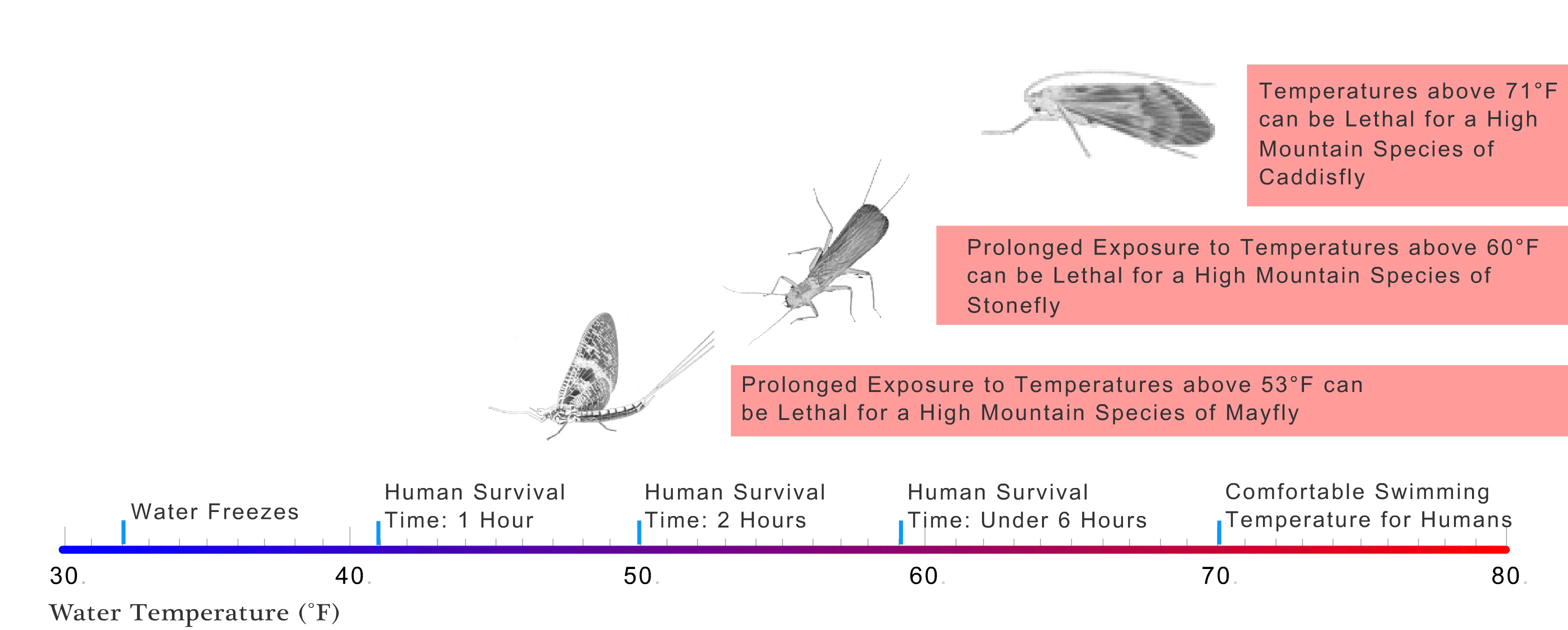The Four C's: Cold
Why is Cold So Important?
Water temperature has direct and indirect effects on nearly all aspects of stream ecology. Largely because temperature plays a major role in determining the amount of oxygen that can be dissolved in water, and everything alive in a stream breathes oxygen.
Cold water can hold much more oxygen than warm water, so aquatic invertebrates and fish with high oxygen demands (the organisms native to the Jocko River) are found only in these waters.
When dissolved oxygen concentrations drop, species that need high concentrations of oxygen—mayfly and stonefly nymphs, caddisfly larvae, and bull trout and westslope cutthroat trout—will move out or die, replaced by organisms like sludge worms, blackfly larvae, and leeches, which can tolerate lower dissolved oxygen concentrations.
What Keeps Streams Cold?

Groundwater also keeps streams cold. When streams overflow onto the floodplain in the spring, water is stored in the ground in alluvial aquifers where it is kept cool. That water is then slowly released back into the stream over the hot summer as the stream's flows drop. This helps maintain cold stream temperatures.
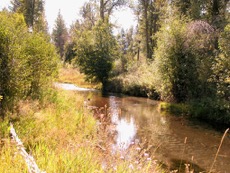
Groundwater-fed spring creeks are beneficial for the same reason. And not only do spring creeks help maintain cold stream temperatures, they also provide refugia (safe areas) during the hottest part of the year, a cool place where fish can escape the summer heat.
Cold water temperatures in a stream depend on a healthy riparian zone.
Other factors that affect stream temperatures include stream flow, stream width, and sedimentation.
Stream flow. When stream flows are low, the water temperature is very sensitive to changes in air temperature. So low flows during the hottest time of the year can dramatically raise stream temperatures.
Stream width. Under the same climatic conditions, narrower, deeper channels will not exchange heat with the atmosphere as rapidly as shallow, wide channels. Riparian vegetation also shades more water on a narrow stream.
Sedimentation. Sediment can fill pools and cause the width-to-depth ratio of a stream to increase, which can facilitate heat exchange. As sediment increases, the stream bottom darkens and so stores more solar radiation. Fine sediment also blocks exchange between surface waters and intragravel flows.
Quality Aquatic Habitat is Cold
How cold is the water in a pristine Montana stream? What you consider cold might be hot enough to kill a bull trout. The scale at the bottom of each of the charts below (click on the image to expand it) show human survival times in cold water as determined by the Red Cross. Compare that with the habitat requirements of the various species' below to see how they compare to your perception of cold.
Click to expand any of these images
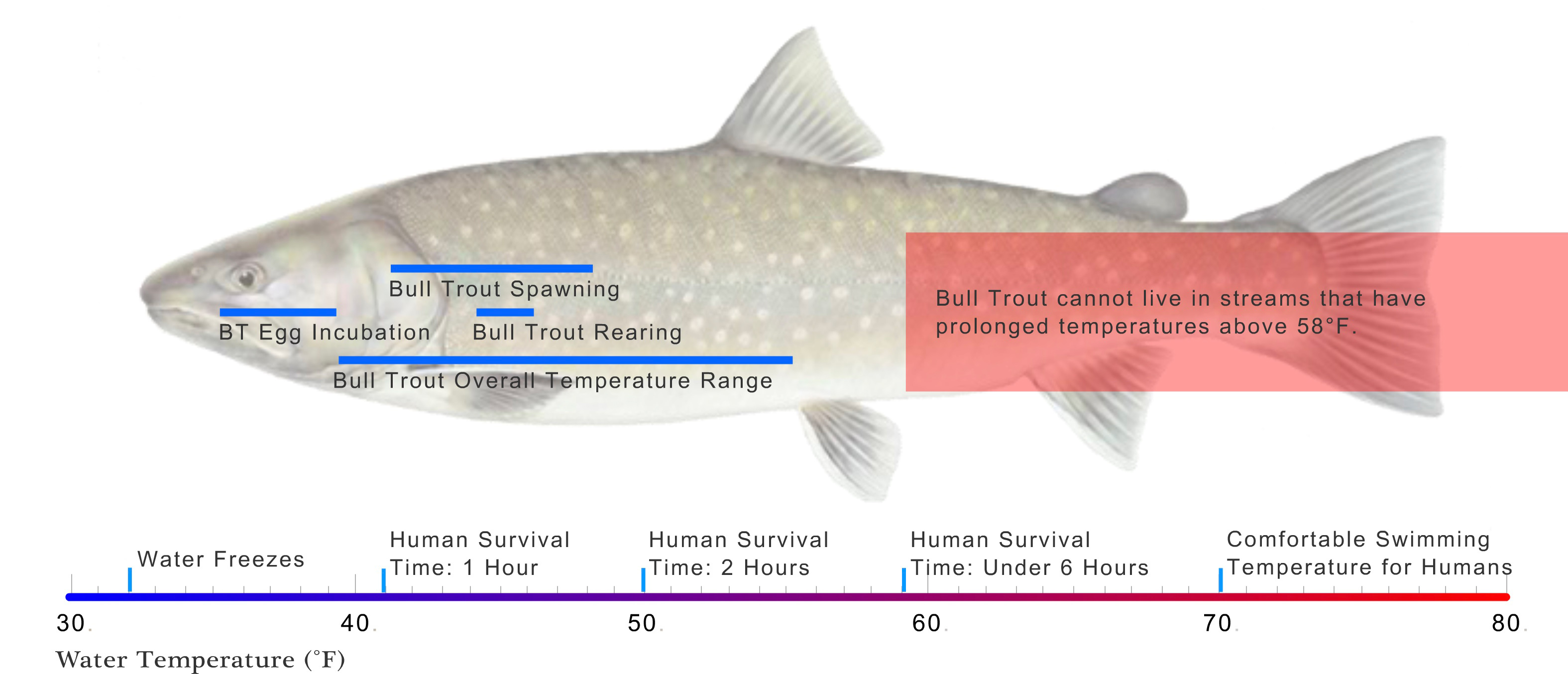
Bull Trout
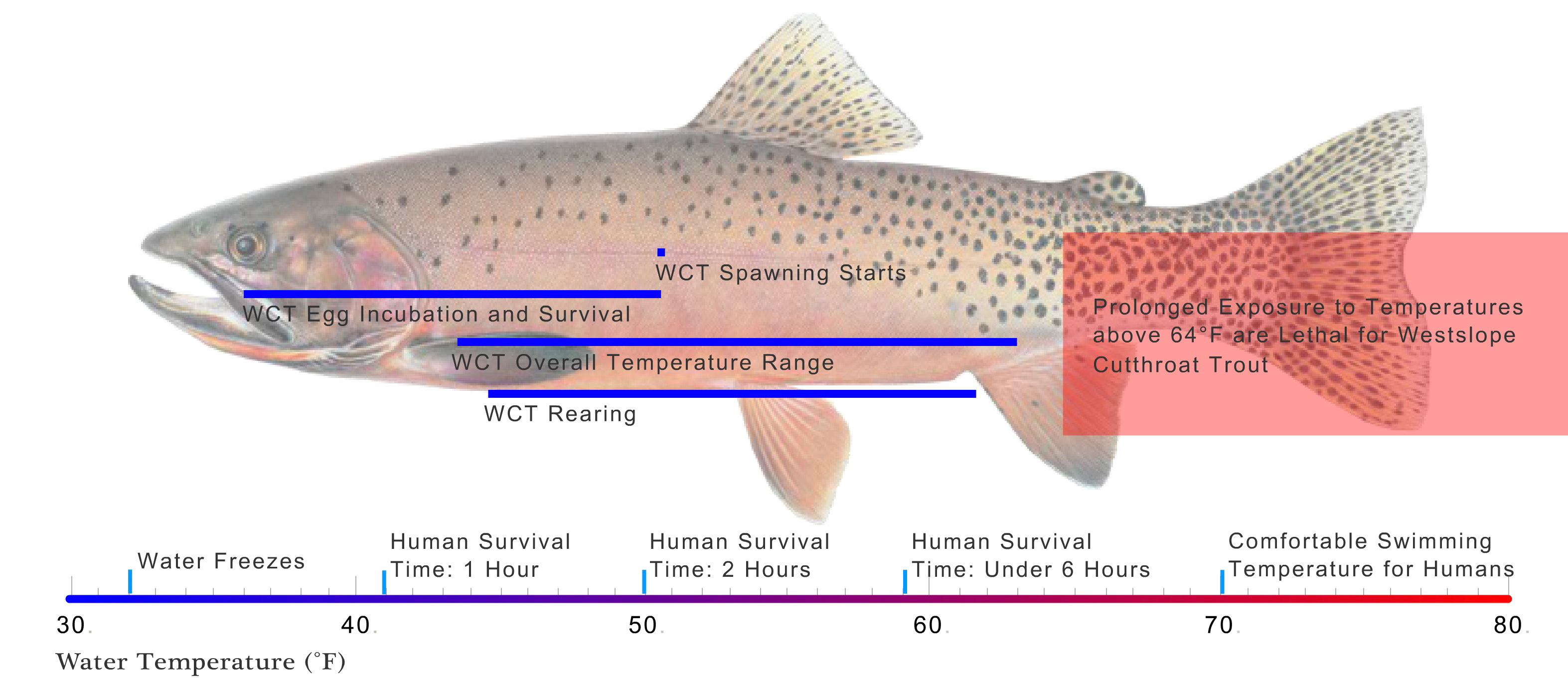
Westslope Cutthroat Trout
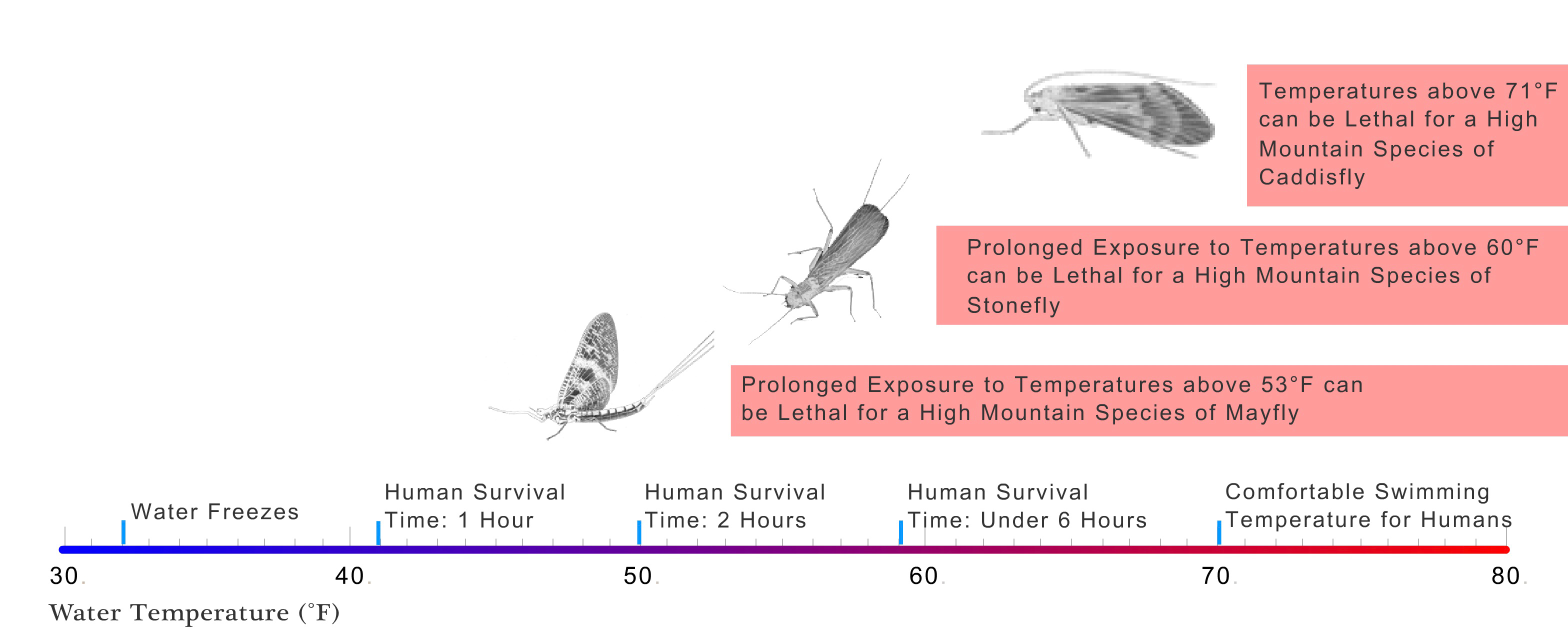
Aquatic Insects
Click to expand any of these images

Bull Trout
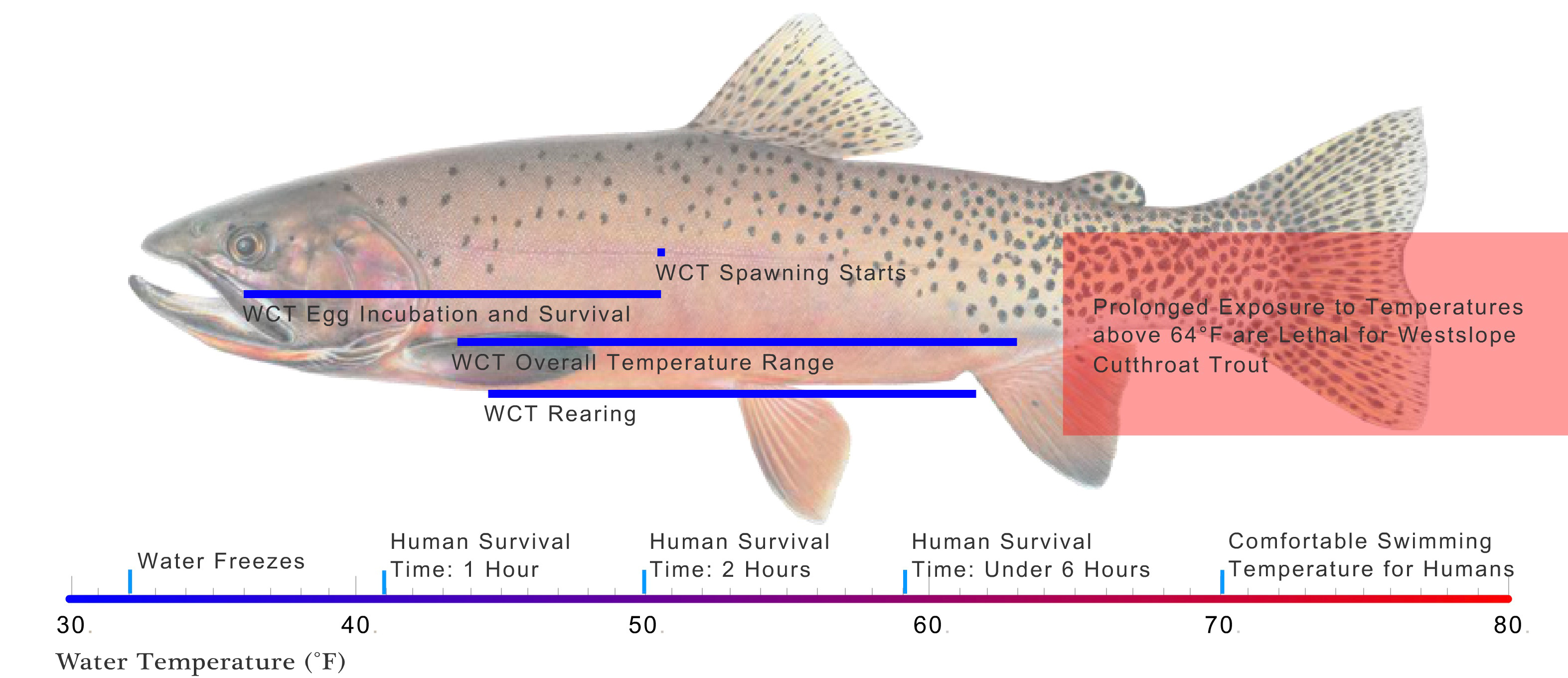
Westslope Cutthroat Trout

Aquatic Insects
The Four C's: Cold
Why is Cold So Important?
Water temperature has direct and indirect effects on nearly all aspects of stream ecology. Largely because temperature plays a major role in determining the amount of oxygen that can be dissolved in water, and everything alive in a stream breathes oxygen.
Cold water can hold much more oxygen than warm water, so aquatic invertebrates and fish with high oxygen demands (the organisms native to the Jocko River) are found only in these waters.
When dissolved oxygen concentrations drop, species that need high concentrations of oxygen—mayfly and stonefly nymphs, caddisfly larvae, and bull trout and westslope cutthroat trout—will move out or die, replaced by organisms like sludge worms, blackfly larvae, and leeches, which can tolerate lower dissolved oxygen concentrations.
What Keeps Streams Cold?

Groundwater also keeps streams cold. When streams overflow onto the floodplain in the spring, water is stored in the ground in alluvial aquifers where it is kept cool. That water is then slowly released back into the stream over the hot summer as the stream's flows drop. This helps maintain cold stream temperatures.

Groundwater-fed spring creeks are beneficial for the same reason. And not only do spring creeks help maintain cold stream temperatures, they also provide refugia (safe areas) during the hottest part of the year, a cool place where fish can escape the summer heat.
Cold water temperatures in a stream depend on a healthy riparian zone.
Other factors that affect stream temperatures include stream flow, stream width, and sedimentation.
Stream flow. When stream flows are low, the water temperature is very sensitive to changes in air temperature. So low flows during the hottest time of the year can dramatically raise stream temperatures.
Stream width. Under the same climatic conditions, narrower, deeper channels will not exchange heat with the atmosphere as rapidly as shallow, wide channels. Riparian vegetation also shades more water on a narrow stream.
Sedimentation. Sediment can fill pools and cause the width-to-depth ratio of a stream to increase, which can facilitate heat exchange. As sediment increases, the stream bottom darkens and so stores more solar radiation. Fine sediment also blocks exchange between surface waters and intragravel flows.
Quality Aquatic Habitat is Cold
How cold is the water in a pristine Montana stream? What you consider cold might be hot enough to kill a bull trout. The scale at the bottom of each of the charts below (click on the image to expand it) show human survival times in cold water as determined by the Red Cross. Compare that with the habitat requirements of the various species' below to see how they compare to your perception of cold.
Click to expand any of these images

Bull Trout
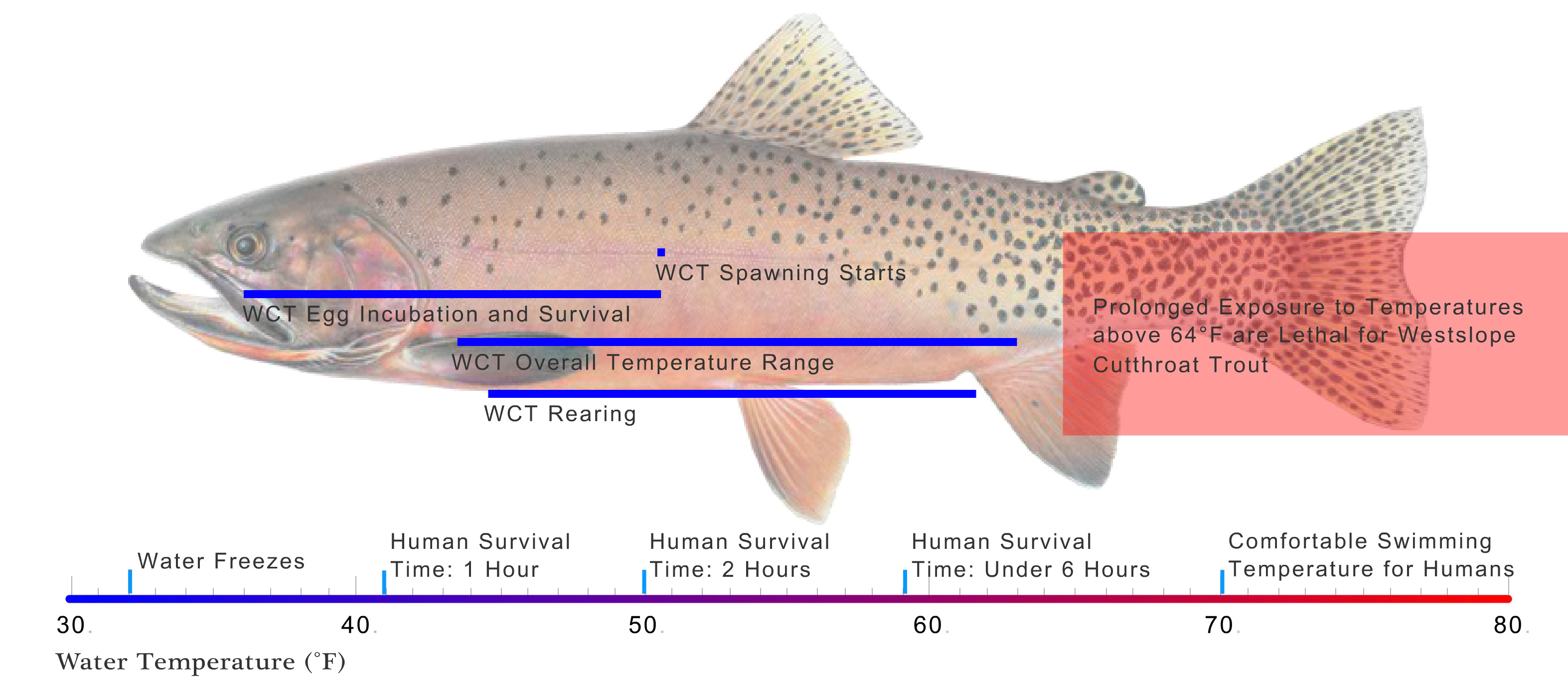
Westslope Cutthroat Trout

